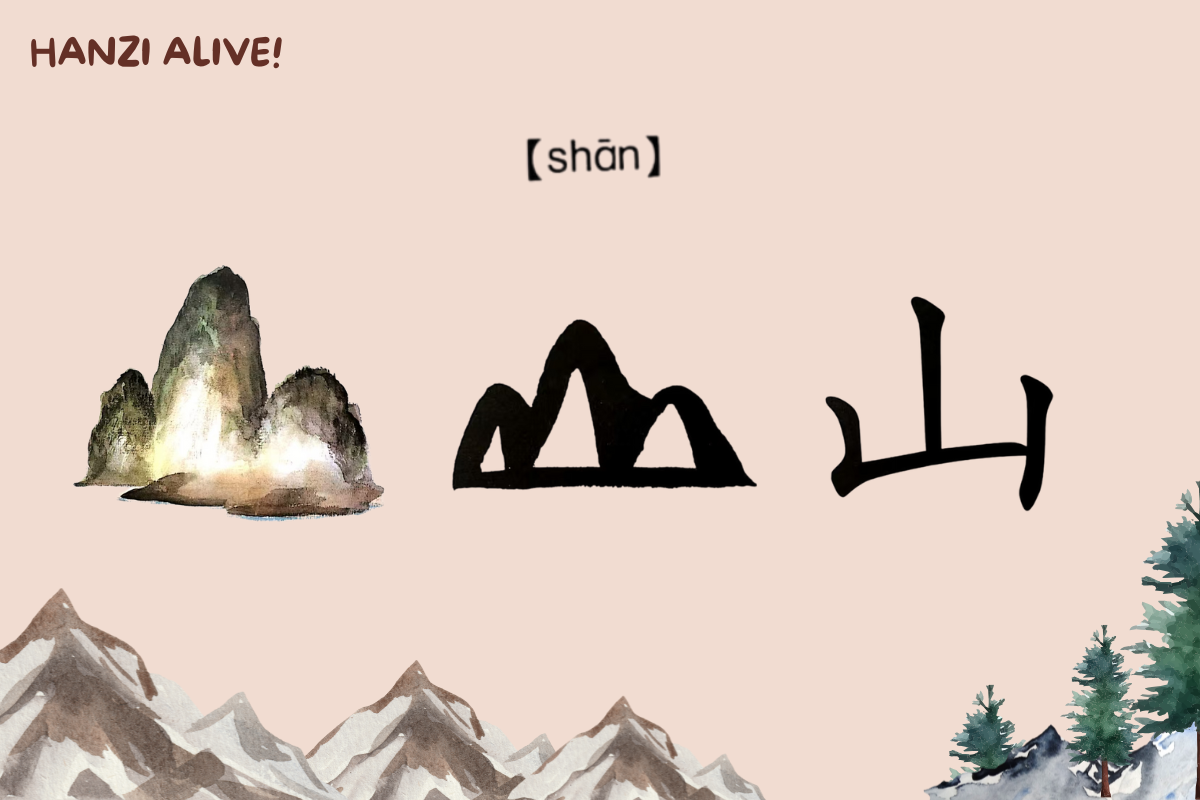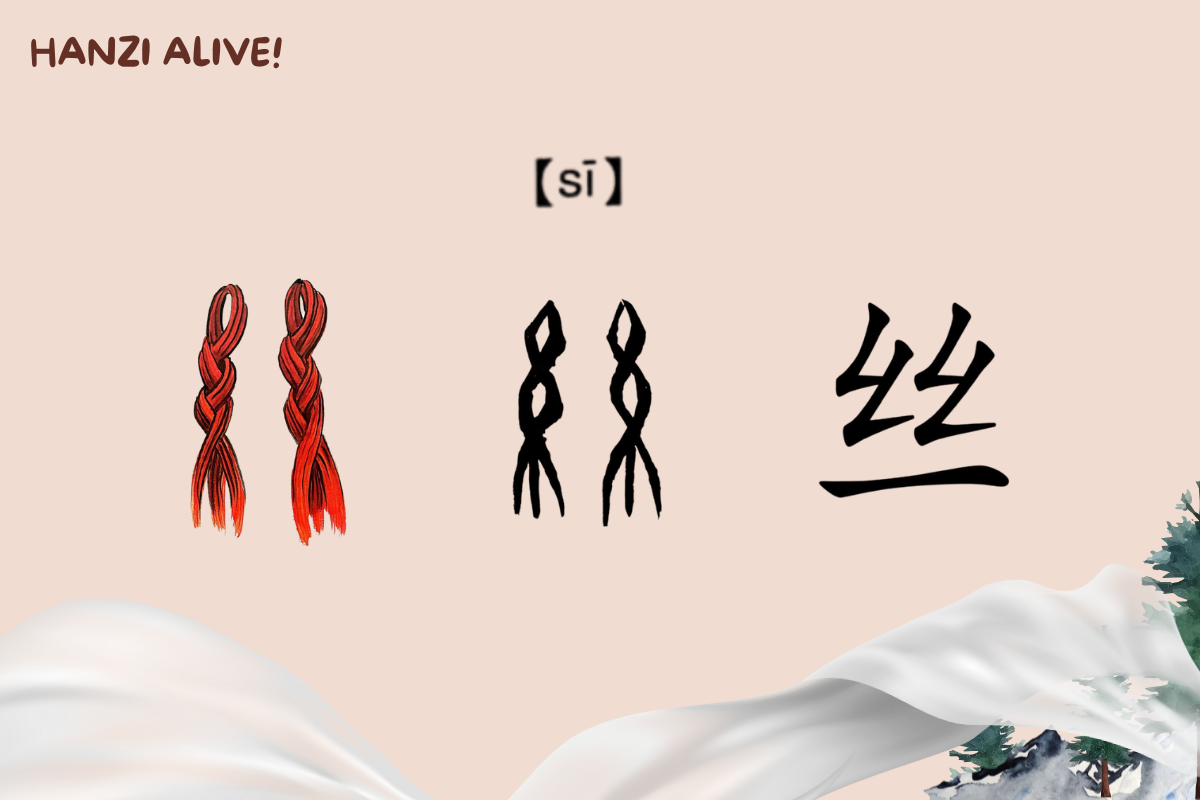Hanzi Alive!(16)
Chinese characters are a simple sketch of nature --- '山' (shān) is the silhouette of three peaks on the horizon, '水' (shuǐ) is the aerial view of flowing rivers, '丝' (sī) is two bundles of soft silk. With these three characters, the Chinese depict their world with concise lines, portraying their hidden message within.
山(shān)
Explanation
- The oracle bone inscription for "山" resembled a mountain range with three peaks, which remains largely unchanged. The modern character features a horizontal line for the horizon and three vertical lines for the peaks.
Example
- The mountain is very high.
这座山很高。
zhè zuò shān hěn gāo. - There are many trees on the mountain.
山上有很多树。
shān shàng yǒu hěn duō shù.
Find and circle "山" in the image:
水(shuǐ)
Explanation
- The character "水" looks like moving water or a river seen from above. As a result, it can represent both "water" and "river."
Example
- The water is very clear.
这水很清澈。
zhè shuǐ hěn qīng chè. - Please drink more water.
请多喝水。
qǐng duō hē shuǐ.
Find and circle "水" in the image
丝(sī)
Explanation
- The original form of this character resembled two bundles of silk. While "丝" signifies "silk," it can also indicate other threadlike substances. The continuity of silky threads led to words related to "connecting" having "丝" as part of their composition. For easier writing, only half of "丝," represented by "纟," is used.
Example
- Silk feels very smooth.
丝绸摸起来很光滑。
sī chóu mō qǐ lái hěn guāng huá. - The silkworm produces silk.
蚕会吐丝。
cán huì tǔ sī.
Find and circle "丝" in the image

Now you have deciphered these age-old pictures: when the outline of '山' meets the ripples of '水' and connects with the length of '丝,' it forms the most beautiful scenery of Chinese characters. The next time you see these characters, you will touch the heartbeat of ancient China through the strokes.




